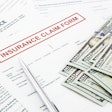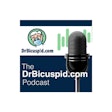
Oral cancer screening is now integral to a patient's routine follow-up, as well as new patient evaluations. Spurred by the rise in oral cancer cases, this examination must be performed more frequently and carefully. It includes a visual and tactile physical examination of the neck, lips, and oral cavity. The tongue is lifted to view both sides and the base, and the uvula and palate are also examined.
The relevant evaluation codes
The following are the codes in the Code on Dental Procedures and Nomenclature (CDT) that can be used with the insurance claim:
- D0120 -- Periodic oral evaluation – established patient
- D0150 -- Comprehensive oral evaluation – new or established patient
- D0180 -- Comprehensive periodontal evaluation – new or established patient (Include oral cancer evaluation in the descriptor. The oral cancer examination must be performed and documented on the patient's chart to complete the evaluation.)
If the dentist feels that other diagnostic tests are in order, the CDT code D0431 -- Adjunctive prediagnostic test that aids in detection of mucosal abnormalities, including premalignant and malignant lesions, not including cytology or biopsy procedures -- is the accepted code in documenting and billing for oral cancer screening using prediagnostic tests. The code does not define the name of the prediagnostic test product used. The code defines the procedure but not the many products available to deliver the test. These products include but are not limited to Vizilite Plus, VELscope, Microlux DL, and staining with toluidine blue.
The tests were designed to illuminate or stain to check for mucosa abnormalities, not to collect samples for further analysis. Many dentists charge a nominal fee for prediagnostic testing to cover the cost of purchasing the testing materials. Dentists are frustrated when a patient's plan administrator denies the procedure for payment.
When you perform these tests, it is in the patient's best interest to protect their health from evidence-based threats. However, when billing their dental plans, well-meaning clinicians may get lost in the denial of services.
It is prudent to check the patient's plan for coverage of the testing and if the code is listed as covered. If the testing is a covered benefit, you will still be denied if you don't provide good clinical notes or a qualifying narrative.
On the dental claim form, use the appropriate International Classification of Diseases (ICD) 10 code. Code Z12.81 -- Encounter for screening for malignant neoplasm of the oral cavity -- is a billable diagnostic code for oral cancer testing or K13.79 -- Other lesions of the oral mucosa.
You can also bill the patient's medical insurance for this prediagnostic test if applicable or if it's denied by the dental plan. When the medical payer requires a current procedural terminology (CPT) code, report CPT Code 82397 -- Chemiluminescent assay.
The patient's health history is a determining factor for their risk of oral cancer; however, there has been a sharp rise in oral cancers in people without known risk factors. Many dentists see evidence of this screening for every adult patient.
Below are the typical known risk factors for oral, neck, and head cancers:
- Tobacco use
- Alcohol consumption
- Ultraviolet exposure of the lips and face
- HPV (sexually transmitted) is on the rise in younger people
- Poor nutrition
- Genetics
- Age, specifically individuals over the age of 40
- Immunosuppression due to drugs or surgery
- Chronic conditions such as lichen planus, leukoplakia, and other oral manifestations
A sample insurance reimbursement appeal narrative for D0431
During comprehensive evaluation (D0150), a patient presents with a history of vaping and occasional alcohol consumption. A visual exam reveals a small, white patch on the right cheek. An illuminated and stained mucosal is performed using Vizilite Plus (D0431).
Note: Follow the appeal directions of the individual insurer. Customize this letter to your diagnosis and product used.
[Your practice name]
[Address]
[City, State, ZIP code]
[Insurer name]
[Name of contact]
[Address]
[City, State, ZIP code]
Subject: [Claim number, date, and patient ID]
Regarding CDT Code DO431: Adjunctive prediagnostic test that aids in detection of mucosal abnormalities, including premalignant and malignant lesions, not to include cytology or biopsy procedures
Appeal of claim on behalf of: [Patient ID]
Dear Claims Examiner [or other entity]:
The American Dental Association (ADA) has assigned CDT code D0431 for adjunctive oral cancer screening. For this screening, we use [Cite the product name and include a description of what the product does and how it is applied.] and further add [Check with the manufacturer of the product to see if the U.S. Food and Drug Administration has given 510(k) marketing clearance for testing of at-risk individuals.] _________________.
It was my professional judgment that this patient's risk factors [list from the patient's health history] would be better served using the [product name] to detect possible mucosal abnormalities that may be missed by the naked eye when performing a conventional oral cancer exam.
I have begun offering this valuable testing to all of my adult patients, as more than 25% of people with oral cancer have little to no lifestyle risk factors, such as tobacco or alcohol use. Moreover, failure to diagnose oral cancer is the second-most frequent reason why dentists are sued, with some plaintiff awards exceeding policy limits.
Please review the attached report of this patient's procedure, including the method used to document my conventional exam and the [product name] exam. Please feel free to contact me with any further questions or information.
Sincerely,
[Your name]
[Your practice name]
Encl: Product information and latest reports from the ADA
Remember to code what you do and document why and how it was performed.
References
- VELscope. Can Oral Cancer Screenings Be Covered by Medical Insurance? VELscope. Published December 10, 2020. https://velscope.com/oral-screening-medical-billing/.
- How do I obtain reimbursement for oral cancer screening? Dentistry IQ. Published March 23, 2007. Accessed April 22, 2024. https://www.dentistryiq.com/dentistry/oral-cancer/article/16356372/how-do-i-obtain-reimbursement-for-oral-cancer-screening.



















